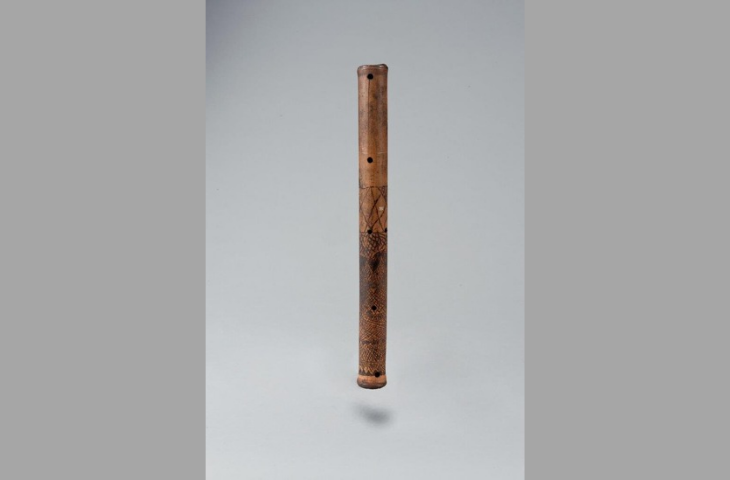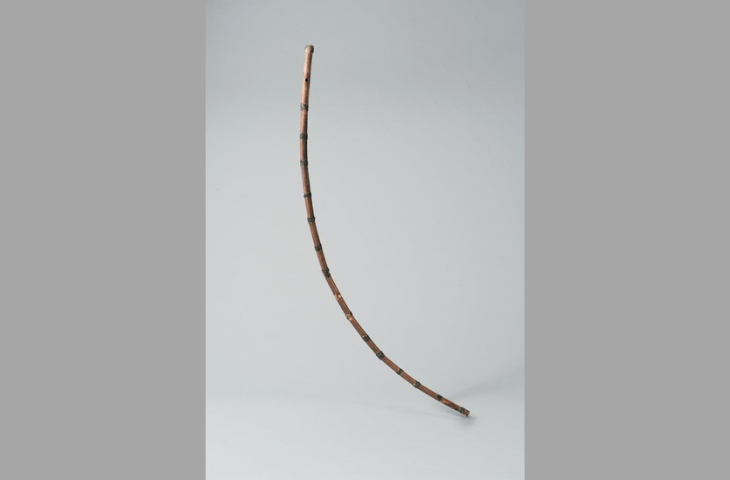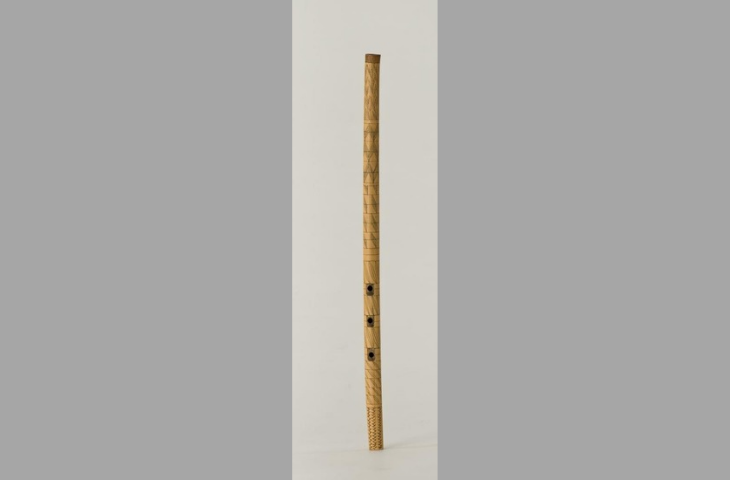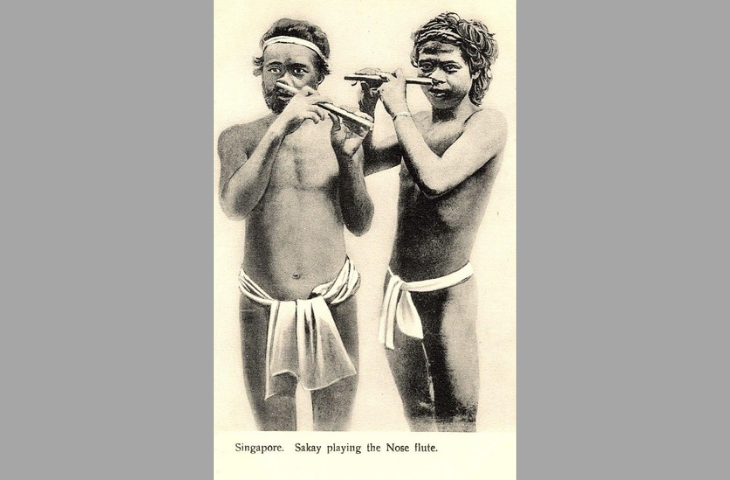July 2022
Fig.1

Fangufangu, Fiji Islands, before 1872 (03A13), inv.0133
Fig.2

Flute, New Caledonia, before 1878 (03A13), inv.0364
Fig.3

Kaleleng, Luzon (island of the Philippines), before 1975, deposit of Mr Fekke de Jager (29A11), inv. D2011.002.0015
Fig.4

Singapore. Sakay playing the Nose flute, postcard, Straits Settlements, after 1907, private collection
Fig.5

Philippine Islands: Young musicians playing the mouth and nose, postcard, Scheut Missionaries, after 1907, private collection
Rare traditional instruments
Nasal flutes, blown through one nostril and not through the mouth as the name suggests, are found mainly in Southeast Asia and on many islands in Oceania. While the musician blows with one nostril, they plug the other with a finger or with a plug made of plant material. Now rare, abandoned, or enjoying a revival, the traditional use of nasal flutes has often been discontinued or survives only among minority populations.
Some nasal flutes are made from a narrow bamboo internode. The node at one end has a small hole for blowing. A variable number of finger holes are drilled along the tube, sometimes including a thumb hole. The flutes are decorated with incised or pyrographed designs, or left undecorated. Other flutes are blown through a hole drilled in the side, not far from the closed end of the pipe. A flute from the Fiji Islands (fig. 1, inv. 0133), made from a large decorated bamboo internode, represents a type with several equally spaced holes, the outermost of which can both be used for blowing. In practice, musicians generally favour one playing direction.
Between doubt and interpretation
While some of these flutes are certainly nasal flutes, others—sometimes regarded as such—are in fact blown through the mouth. Errors in the inventory compiled by Victor-Charles Mahillon, the MIM’s first curator, are due to the very incomplete and imprecise information available to him. These flutes are not mentioned here. Sometimes doubt remains: is a flute a nasal flute or not? When the blowing hole is far from the end of the instrument, old photographs are unclear and do not reveal the technique. Most early photos are posed rather than candid; the musician is not actually playing, and their gesture is ambiguous. The position of the flute and of the musician does not allow for a definite conclusion.
This long flute from New Caledonia (fig. 2, inv. 0364), made from an artificially curved reed with reinforced nodes to prevent splitting, is probably not truly a nasal flute. Mahillon acquired it at a world exhibition in Paris and considered it to be one. Very little literature exists on the instrument, and its use has been lost. Photos of this type of flute show musicians apparently with closed mouths, but their noses also do not appear to be pressed against the instrument. This flute has only one hole near each end: one for blowing, on the wider side, and the other for altering the pitch.
Text: Claire Chantrenne